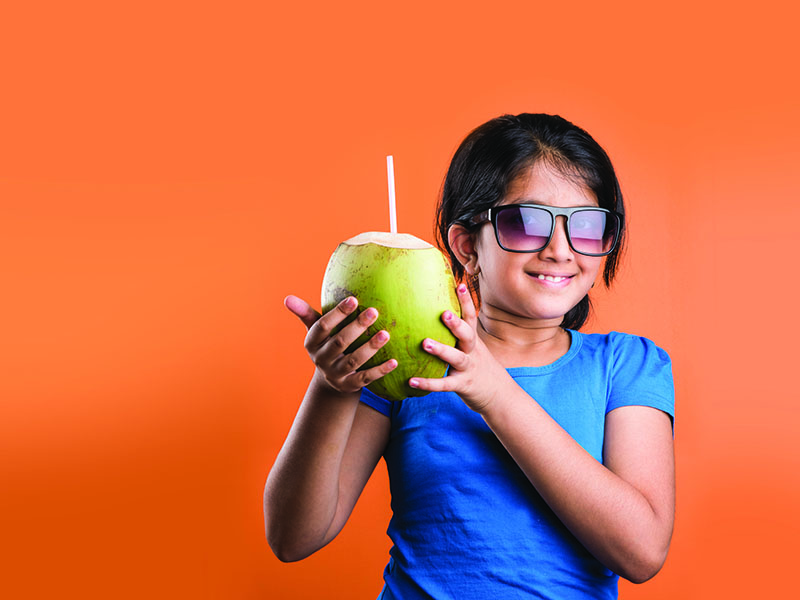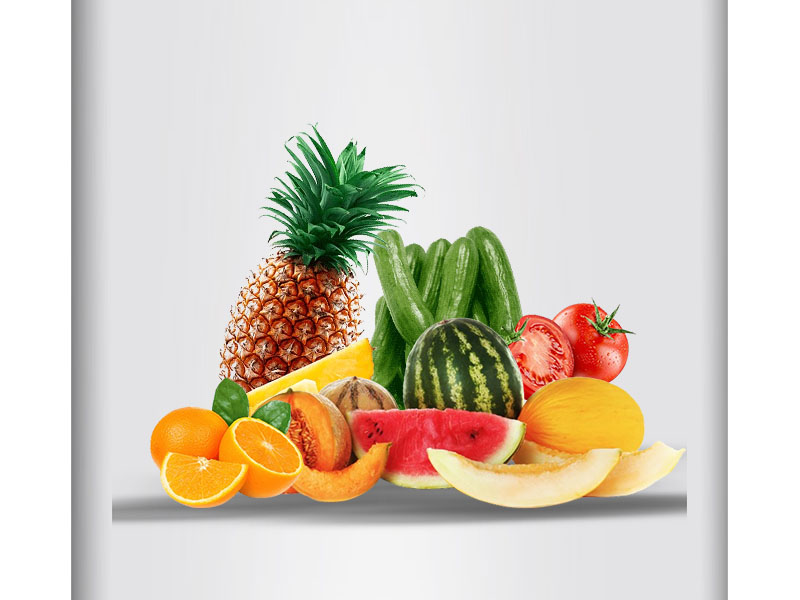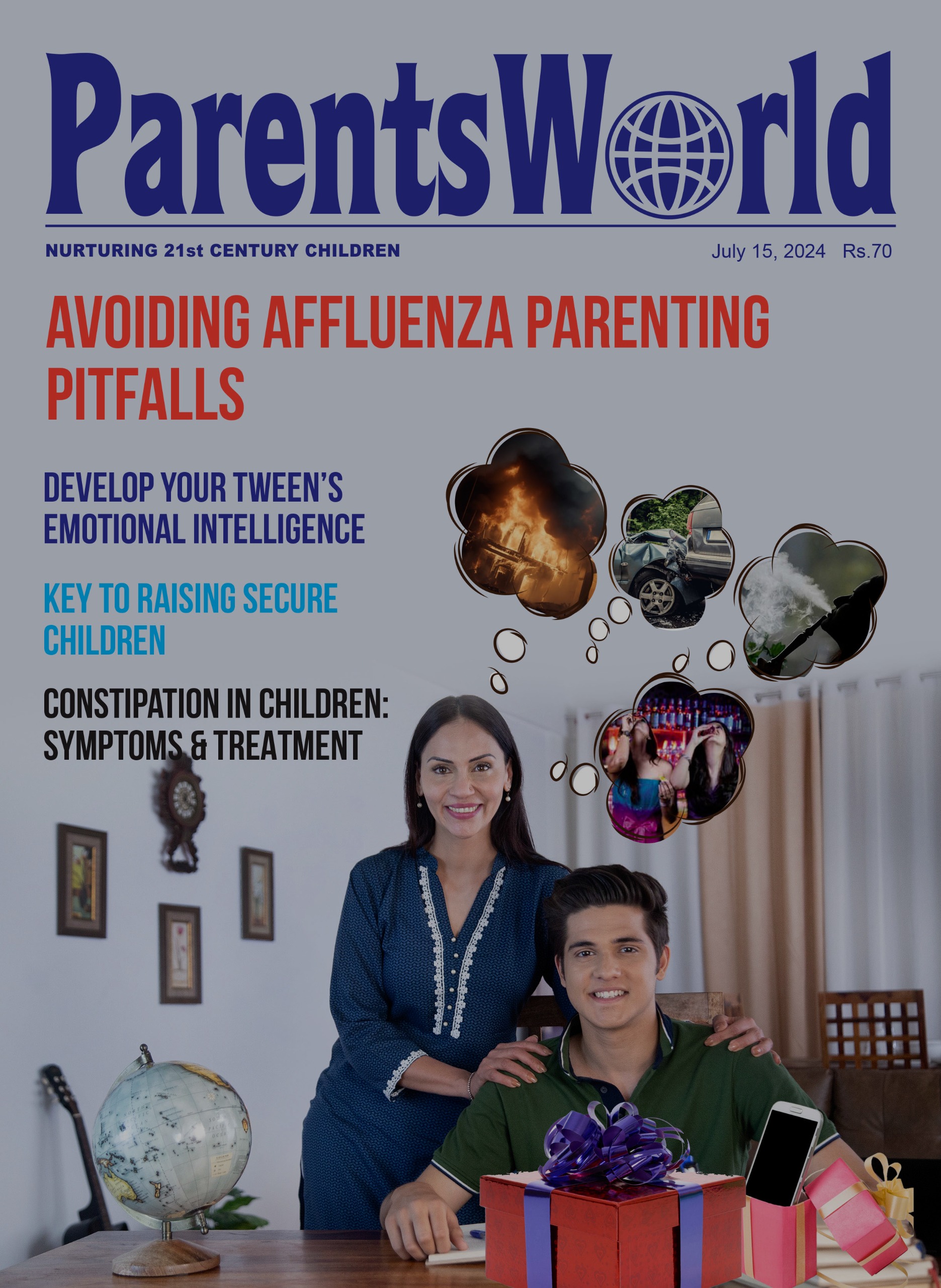With summer holidays having begun across the country and children likely to spend more time outdoors, it’s especially important for parents to protect children against summer heat. In this special summer cover story, eminent medical practitioners and health experts provide precautionary guidelines to cope with common summer heat-related ailments -Kiran Balimane & Cynthia John

“April is the cruelest month
Lilacs out of the dead land, mixing
Memory and desire, stirring
Dull roots with spring rain…”
— T.S. Eliot, The Wasteland
When Nobel laureate-American poet T.S. Eliot (1888-1965) wrote these words in 1922, global warming and climate change were not on his horizon. A century later, with environmental disasters pushing Planet Earth to the edge, he would perhaps have used harsher words to describe the summer months bereft of healing spring rain.
In India, as in the rest of the world, it has been a long, hot March of 31 days with April-May predicted to be more cruel. Bangalore, from where ParentsWorld is published, recorded its highest March temperature of 36.4oC and highest April temperature of 37.6oC, with the Met department issuing a heat wave warning across Karnataka. Elsewhere in the country too, mercury rising records are being broken.
In early March, the Indian Met Department (IMD) and National Disaster Management Authority (NDMA) issued a joint advisory that the unprecedented nationwide summer heat wave is likely to prompt dehydration, heat exhaustion, strokes, and cramps. Already Karnataka has reported 521 heatstroke cases and two deaths since March. With summer holidays having begun across the country and children likely to spend more time outdoors, it’s especially important for parents to protect children against the summer heat. In this special summer cover story, medical practitioners and health experts present precautionary guidelines to cope with common summer heat-related ailments.

Dr. Saurabh Khanna
Dehydration
Dehydration is the most common summer ailment, as children tend to spend more time outdoors during the holidays. According to Dr. Saurabh Khanna, lead consultant, paediatrics and neonatology at CK Birla Hospital, Gurugram, the best way to prevent dehydration is to ensure children remain hydrated by drinking plenty of water/fluids through the day. An alumnus of MP Shah Medical College, Jamnagar and Jaipur Golden Hospital, Delhi, Dr. Khanna specialises in asthma and allergies, child and adolescent health, infant nutrition, childhood obesity and diabetes. Dr. Khanna’s guidelines for hydration during the hot summer months are set out below.
Daily water/fluids intake
Toddlers (1-3 years). 1.3 litres including water, milk, and small amounts of fruit juice.
Young children (4-8 years). Approximately 1.6 litres. Prioritise water as the main input of hydration.
Pre-teens (9-13 years). Boys: Around 2.4 litres; Girls: 2.1 litres.
Teens (14-18 years). Boys: Minimum 3.3 litres; Girls: 2.3 litres.
Dr. Khanna’s further and better particulars to safeguard children against dehydration:
Encourage regular water drinking. Make water readily available and encourage children to drink water regularly, not just when they’re thirsty. For instance, encourage the habit of children drinking water after waking up in the morning, before leaving home, after returning home and before bedtime.
Fruits and vegetables. Incorporate water-rich fruits and vegetables such as watermelon, cucumbers, and strawberries, into children’s summer diets (see box p.14).
Limit sugary drinks. Minimise the intake of sugary sodas, juices, and sports drinks. They contribute to dehydration and contain excessive calories.
Adjust water intake for activity and environment. On hot days or when engaging in sports, children need to drink more water to compensate for the increased fluid loss through perspiration.
Water loss. Summers are associated with gastrointestinal infections such as diarrhoea which can aggravate dehydration. Sweating also leads to loss of water and salts. If children complain of dehydration, administer oral rehydration salts (ORS) immediately.
Dehydration symptoms. Signs of dehydration include dry mouth and throat, fatigue or weakness, dizziness, light-headedness, headaches, dark yellow urine or decrease in urine output and dry skin and sunken eyes.
Children’s hydration needs vary widely. Pay attention to their body signals, and adjust fluid intake accordingly. For children with health problems or those participating in high-intensity sports, consult a healthcare provider for customised advice. Encouraging good hydration habits sets the foundation for healthy lifestyles as children mature into adulthood.

Dr. Rahul Agrawal
Heat stroke
Heat stroke is a condition caused by body overheating, usually as a result of prolonged exposure to or physical exertion in high temperatures. According to Dr. Rahul Agarwal, head of the department and clinical director (Internal Medicine), CARE Hospitals, Hitech City, Hyderabad, heat stroke is common in the summer months. Dr. Agarwal who has more than 21 years of expertise and experience in general and tropical medicine, cardio-metabolic disorders and emergency and critical care, offers valuable information on ways and means to prevent and treat heat stroke.
Symptoms
- Very high body temperature of 104oF (40oC) or higher.
- Fatigue, weakness, and excessive perspiration.
- The skin is hot and flushed as blood vessels dilate to release heat. Profuse sweating may transition to dry, clammy skin as the body’s cooling mechanisms falter.
- Pulse rate accelerates in response to severe physiological stress, with breathing becoming shallower and more rapid, resulting in headache, dizziness, or light-headedness as cerebral functions are impaired by heat stress.
- Gastrointestinal disturbances such as nausea, vomiting, or diarrhoea may ensue, further complicating fluid and electrolyte balance.
- Cognitive impairments become evident, ranging from confusion and disorientation to agitation or sometimes delirium.
- Seizures or convulsions may occur as neurological functioning is compromised by hyperthermia. In severe cases, loss of consciousness or fainting spells may precede life-threatening complications.
Preventing heat stroke
Hydration vigilance. Prioritise regular water intake through summer, irrespective of thirst cues, to replenish fluids lost through perspiration. Restrict consumption of dehydrating beverages such as alcohol and caffeine, which exacerbate fluid loss.
Appropriate attire. Wear lightweight, breathable clothing in light colors to facilitate heat dissipation. Loose-fitting garments permit airflow, enhancing evaporative cooling.
Alter outdoor play timings. Schedule outdoor play during the cooler hours of early morning or late evening, minimising exposure to sunlight intensity. Seek shade whenever possible, supplementing respite with periodic breaks in cooler environments.
Sun shield. Apply broad-spectrum sunscreen liberally to exposed skin to mitigate risk of sunburn, which compromises thermoregulatory function.
Thermoregulatory aids. Utilise cooling devices such as cold showers, fans, or air-conditioners to lower body temperature.
Reduce physical workouts. Temper the intensity and duration of physical exertion during extreme heat, opting for low-intensity physical exercise and indoor workouts.
Treatment
If your child experiences any of the cited symptoms, immediately call for emergency medical service. While you await emergency medical treatment, do the following:
Relocate to a cooler space. Transfer the afflicted individual to a shaded or air-conditioned environment, shielding her from further heat exposure.
Facilitate rapid cooling. Try to lower body temperature with tepid water immersion, cold compresses, or ice packs applied to strategic bodily locales (armpits, groin, neck).
Monitor vital signs. Maintain vigilant surveillance over children’s vital signs, including body temperature, pulse rate, and consciousness levels, until professional medical assistance arrives.

Dr Gita Mathai
Skin ailments
Summer heat not only prompts exhaustion, dehydration and heat stroke but also prickly heat. Red goosebumps that itch intolerably may spread rapidly all over the body. According to Dr. Gita Mathai, a Vellore-based paediatrician and author of Staying Healthy in Modern India (2017), prickly heat occurs because moist dirt blocks sweat pores and the skin is secondarily infected with bacteria.
“Talcum powder is commonly used for prickly heat. But it usually aggravates the problem. Its combination of ground zinc stearate and silicates mixes with sweat to form a chalky precipitate that aggravates skin pores blockage. Moreover, talcum powder, if applied to the groin and genital areas, can migrate through the vagina, uterus, and fallopian tubes to the ovary where it could introduce carcinogens. Airborne inhaled talc can also cause pneumonia or inflammation and swelling of the airways which could be fatal for infants. Therefore, the best antidote to prickly heat is to bathe twice daily and apply soap with a towel, herbal or plastic scrubber, and not directly to the skin,” advises Dr. Mathai.
Other summer afflictions
Gastro-intestinal infections. Food tends to spoil fast because excess heat bacteria multiply faster in cooked food, leading to stomach infections. Whether eating out or at home, ensure food has been freshly cooked and/or properly refrigerated.
Headaches. Prolonged exposure to harsh sun could cause headaches. Make sure the family remains indoors in cool spaces to the extent possible. In particular, keep children out of the mid-day sun.
Sunburn. Direct exposure to sun causes sunburn, with symptoms such as itchy, dry, red skin, nausea and often fever. Use light coloured clothing to cover skin on hands, legs, etc and avoid prolonged exposure to direct sunlight.
 Heat wave: Do’s & dont’s
Heat wave: Do’s & dont’s
On March 24, the National Disaster Management Authority issued an advisory to prevent and manage the 2024 summer heatwave. Excerpts:
Heat wave conditions result in physiological strain, which could even result in death. To prevent serious ailment or death because of heat stroke, take the following measures:
- Avoid going out in the sun, especially between 12.00 noon and 3.00 p.m.
- Drink sufficient water and as often as possible, even if not thirsty.
- Wear lightweight, light-coloured, loose, and porous cotton clothes. Use protective goggles, umbrella/hat, shoes or chappals while going out in the sun.
- Avoid strenuous activities when the outside temperature is high. Avoid working outside between 12 noon and 3 p.m.
- While travelling, carry water with you.
- Avoid alcohol, tea, coffee and carbonated soft drinks, which dehydrates the body.
- Avoid high-protein food and do not eat stale food.
- If you work outside, use a hat or an umbrella and also use a damp cloth on your head, neck, face and limbs.
- Do not leave children or pets in parked vehicles.
- If you feel faint or ill, see a doctor immediately.
- Use ORS, homemade drinks like lassi, torani (rice water), lemon water, buttermilk, etc, which helps to re-hydrate the body.
- Keep animals in the shade and give them plenty of water to drink.
- Keep your home cool, use curtains, shutters or sunshade and open windows at night.
- Use fans, damp clothing and take bath in cold water frequently.
Acclimatisation. People who travel from cooler climes to hot climates are especially at risk. If you have such a person(s) visiting your family during the summer season, ensure they don’t venture into open areas for at least one week until the body is acclimatised to the heat. Encourage them to drink plenty of water.
(Source: www.ndma.gov.in)
Water intake tracking apps
PW’s shortlisted three water intake tracking apps:
Hydro Coach. This app has an inbuilt calculator to determine and monitor ideal daily water intake. Set the target and you will get reminders to ensure you meet set goals.
Plant Nanny Water Tracker. In this video-game-like app, plants grow more when you drink more water. Choose from a variety of plant characters, and attractive visuals will motivate children to remain hydrated.
Aqua Alert: Water Tracker Daily. This app allows you to customise and adjust your water intake according to age, weight, local weather, activity and gender. More important, it sends frequent reminders to drink water.
Travel smart
Families often travel during the summer holidays. To ensure healthy and happy holidays:
- Avoid eating/drinking at roadside eateries
- Drink only bottled mineral water
- Ensure children wear light colour clothing that absorb heat and allow perspiration to evaporate.
- Rehydrate with regular consumption of coconut water, buttermilk and/or lemon juice.
- Remain indoors during the hottest part of the day (between 12 and 3 p.m) or use caps and umbrellas.
- Ensure that immunisations of children are up-to-date. Typhoid boosters must be taken every three years after the age of two, and ensure that two injections — taken six months apart — are administered to children to immunise them for life against Hepatitis A (jau
 ndice).
ndice).
Cool Summer foods
Children are especially susceptible to heat exhaustion during hot summer months as their young bodies don’t cool down as quickly. Excess heat can cause dehydration, exhaustion and skin ailments. Including the right foods and fluids in children’s diets can enable them to remain hydrated and improve digestion.
Deepalakshmi Sriram, paediatric & neonatal nutritionist, The Cleft & Craniofacial Centre, Sree Balaji Medical College & Hospital, Chennai, recommends several cool and healthy summer foods.
Watermelon. With its high water content, this is an ideal fruit to quench thirst during summer. It’s also rich in many nutrients and antioxidants including fibre, vitamin A and vitamin C.
Muskmelon. A refreshing summer fruit, it’s also high in water content, and contains carotenoids and minerals such as copper, iron, magnesium, manganese, zinc, and calcium, and vitamins A, B and C.
Ice apple. This tropical fruit possesses natural cooling properties, making it an ideal choice to beat dehydration

Deepalakshmi Sriram
during hot summer days. With its high-water content (95 percent) and electrolyte-rich composition, including minerals such as potassium and magnesium, it maintains the body’s electrolyte balance, preventing heat exhaustion and promoting overall well-being.
Buttermilk & yogurt. Buttermilk with its combination of yogurt, salt and water balances the levels of electrolytes and fluids in the body. Yogurt has great probiotic properties and increases production of good bacteria in the digestive tract. Including raita during meals is an excellent option because it combines yogurt with cucumber and tomatos.
Coconut water. An excellent source of electrolytes such as potassium, sodium, and magnesium, it maintains fluid balance in the body, essential for hydration. Its natural cooling properties regulate body temperature and reduce heat stress.
Lemon juice. Loaded with the goodness of vitamin C, lemons with their 90 percent water content and electrolytes help the body remain hydrated.
Orange, sweetlime, pineapple. These fruits are excellent sources of Vitamin C, a nutrient that strengthens the immune system and maintains smooth and elastic skin. They also provide fibre which aids digestion.
Cucumber. This water-rich fruit keeps the body cool and also contains fibre.
Tomato. Contrary to popular perception, tomato is not a vegetable but a juicy fruit with 94 percent water content. It’s rich in fibre, vitamins C and K, potassium, and antioxidants such as lycopene.
Celery. With 95 percent water content, celery is also high in fibre. Add it to a chicken salad or slather it with peanut butter.
Cruciferous vegetables. Broccoli, cauliflower, and cabbage are excellent sources of water (92 percent), as also fibre, iron, and potassium. Try them steamed for maximum nutrition and hydration.
Iceberg lettuce. The bedrock of most salads, lettuce, in all its varieties, is mostly made up of water. However, iceberg lettuce is the clear leader with 96 percent water content.






















